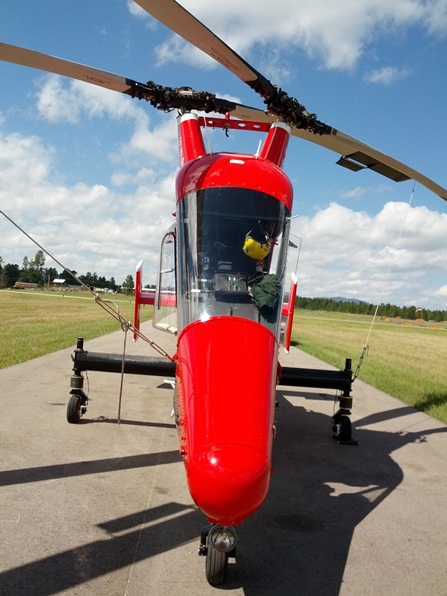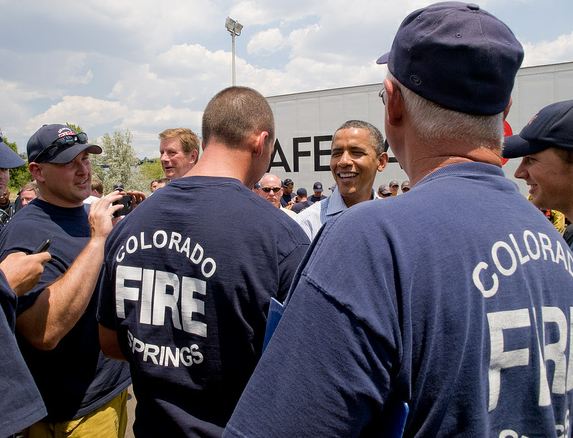
I stopped by the Custer, South Dakota airport the other day and talked with the helitack crew and checked out the firefighting helicopters on the ramp.
The K-MAX in the photos is operated by Swanson Group Aviation and is assigned to Custer as one of the 34 Type 1 helicopters on national contracts this year. It can be a little rare to see a Type 1 ship actually parked at their “assigned” station, since as a national resource they move around frequently. This one and the AStar below had just returned from working on fires in Colorado.

These photos look like they are distorted — no helicopter can look like this, right? But they are unedited except for cropping. Kaman Aircraft only built 38 of them between 1991 and 2003, and 25 are still flying. Eight of those 25 are on exclusive use contracts with the U.S. Forest Service for firefighting. My theory is that the USFS likes the K-MAX because it is much less expensive than the other five models of Type 1 helicopters on contract, but they can still count it as a Type 1, even though it may be about 20 gallons short of being able to carry the 700-gallons of water required as the minimum for a Type 1. The K-MAX has about 25 percent of the capacity of an Aircrane and the cost is also about 25 percent. The USFS pays $1,924 per flight hour for a K-MAX K-1200 compared to $7,718 for an Aircrane which can carry 2,650 gallons of water.
The most striking feature — well there are several, actually — are the two counter-rotating main rotors. Since they rotate in opposite directions, the torque is balanced, leading to striking feature number two — there is no need for a tail rotor. Striking feature number three is the extraordinarily thin width of the ship when viewed from the front. It looks like there is barely enough room for one pilot to squeeze into the cockpit.
The K-MAX is one of the few helicopters specifically designed to do nothing but carry external loads. Kaman made no compromises. There is no room for a passenger, very little room for internal cargo, and no wasted space or weight.

The second helicopter at Custer was a Eurocopter AS 350 B3, usually called an AStar. This one is operated by Roberts Helicopters out of Cheyenne, WY.
It’s nice that the two helicopter vendors got together and coordinated the paint schemes.

A little trivia about the AS 350 B3: it was first helicopter model to land on the summit of Mt. Everest, 29,030 feet above sea level.


